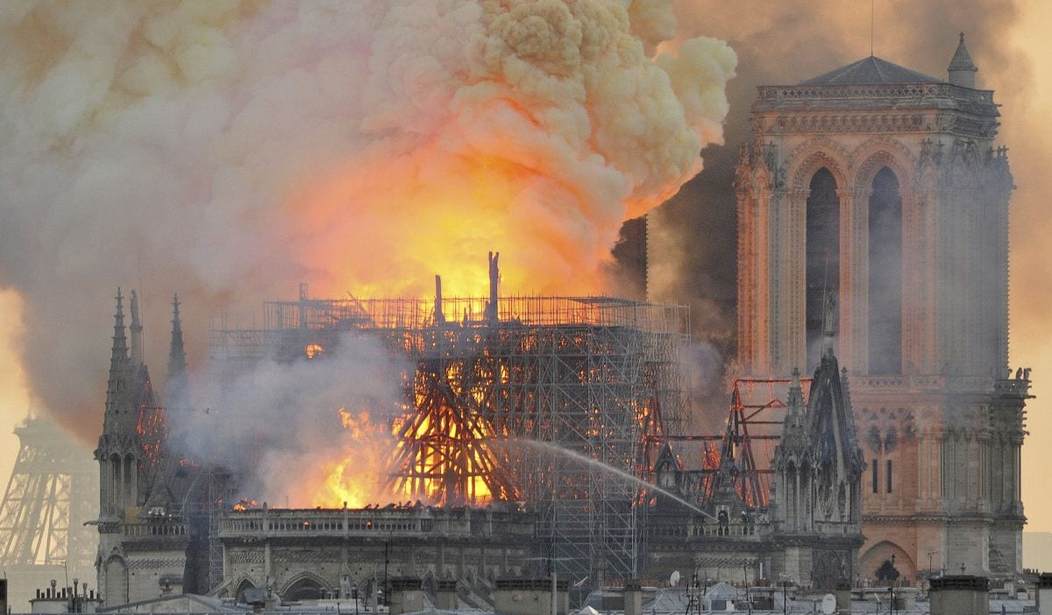Does the New York Times have a religion editor? They have a “religion correspondent,” but it used to be that religion was a major section in most daily newspapers with its own editors and reporters.
Today? Not so much.
But judging by the reporting on some of the religious aspects of the fire at Notre Dame cathedral, maybe the Times could revive the position — at least so that errors like this wouldn’t happen.
In a Thursday report on the fire at Notre Dame, The Times highlighted the actions of Father Jean-Marc Fournier, the Paris Fire Department chaplain who exposed himself to certain danger in order to recover the cathedral’s treasured relics.
“I had two priorities: to save the crown of thorns and a statue of Jesus,” the Grey Lady quoted him. The story was full of gripping details about the scramble to preserve this statue. “As the chaplain began removing a statue of Jesus, he said, his colleagues were fighting the fire from the cathedral’s towers,” the paper reported. “With the statue in hand, Father Fournier, alone in the nave, gave a benediction to the cathedral,” he said.
It’s a great angle to the story, one not covered by most other news outlets. But there’s only one teensy, weensy, problem with the description of Father Fournier’s heroics.
There’s no statue of Jesus inside Notre Dame. What Father Fournier was referring to was the Blessed Sacrament, communion bread that, according to Catholic doctrine, contains the real presence of Jesus Christ.
Sure enough, The New York Times later appended this correction to the story: “An earlier version of this article misidentified one of two objects recovered from Notre-Dame by the Rev. Jean-Marc Fournier. It was the Blessed Sacrament, not a statue of Jesus.”
How could the newspaper possibly confuse these two things? The most logical explanation is that Father Fournier referred to the “body of Christ,” and the reporter took his words literally and not seriously. It doesn’t appear to be a translation error; the reporter who wrote the story, Elian Peltier, appears to be fluent in French and tweets in the language regularly.
So it’s an honest mistake, right? After all, the mysteries of Catholic doctrine are sometimes a mystery to Catholics themselves.
But this isn’t the first time the Times has gotten a religious story hilariously wrong.
Of course, embarrassing as Peltier’s gaffe might be, it’s hard to top this correction the venerable paper ran in 2013: “An earlier version of this article mischaracterized the Christian holiday of Easter. It is the celebration of Jesus’ resurrection from the dead, not his resurrection into heaven.”
A reporter for the paper had apparently confused the resurrection with the ascension into heaven.
The following year, the paper once again botched the resurrection in an article on Israeli tourism. “Nearby, the vast Church of the Holy Sepulcher marking the site where many Christians believe Jesus is buried, usually packed with pilgrims, was echoing and empty,” observed the Times.
Again, the whole point of the resurrection is that Jesus rose from his tomb. He isn’t buried anywhere.
This kind of cluelessness about cultural matters that most Americans who have even a passing familiarity with Christianity know and understand bespeaks an attitude by the paper that reveals much about how they think about the rest of us. They don’t get it right because they don’t think it important enough. It’s not that they’re “anti-Christian” although some staff reporters may be. It’s that they don’t care about you, your beliefs, the way you live your life, or anything else that you might consider important.
Don’t expect this to change anytime soon. This attitude is ingrained in the culture of the paper as deeply as any liberal dogma they embrace with passion.










Join the conversation as a VIP Member